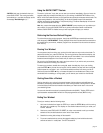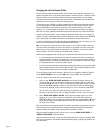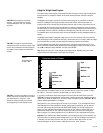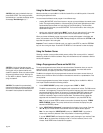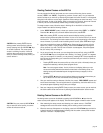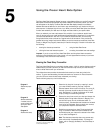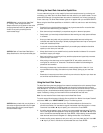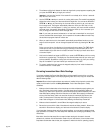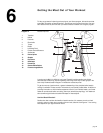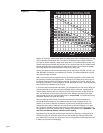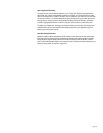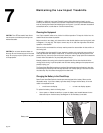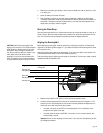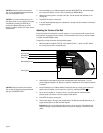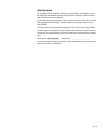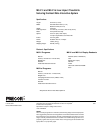
page 30
Diagram 15 shows your recommended heart rate training zone, which is calculated using your age
and your maximum aerobic heart rate. Your maximum aerobic heart rate is equal to 220 minus
your age. The chart is based on a resting heart rate of about 72 for males and 80 for females. Your
optimum training zone is between 65% and 80% of your maximum heart rate. For efficient aerobic
exercise, work only hard enough to keep your heart rate in this zone. You will obtain the greatest
fat-burning benefits when you exercise within the optimum training zone.
Pushing yourself beyond the recommended range, (that is, exercising so hard that your heart rate
rises above 80% of maximum) can overstress your muscles. To increase cardiovascular improve-
ment, exercise
longer
, not harder.
Keep in mind that this zone is an approximation, to be used as a guideline—individual heart rates
vary according to several physiological factors. To determine your training zone, find your age on
the diagram, and then find the line where they intersect. For example, if you are 35 years old, your
training zone is between 114 and 140 beats per minute. Remember this zone—this is the heart rate
zone you should try to maintain as you work out.
If you do not have an accurate heart rate monitor, you can determine your heart rate by taking your
pulse at a place that you can reach easily and comfortably while you exercise. Typical places for
measuring heart rate are directly over the heart on the left side of the chest, on either side of the
neck, over the temple, or on the thumb side of either wrist. Wherever you measure your pulse,
make sure that you use your index and middle fingers—not your thumb. Your thumb has a strong
pulse which can affect your pulse rate reading.
Once you locate your pulse, look at a clock with a second hand, and count the beats for six
seconds. Multiply that number by 10 to determine the total number of beats per minute. For
example, if you count 14 beats over six seconds, the total number of beats per minute is 140.
Compare the total number of beats with your training zone as identified in Diagram 15. If neces-
sary, increase or decrease your activity level to bring your heart rate into your training zone. You
can regulate your work level (and heart rate) by changing belt speed and incline. Remember—your
heart rate is the definitive measure of how hard you are working.
Regardless of your fitness level, avoid doing too much too soon. Running or walking too fast or
choosing too high of an incline are common errors. Give yourself time to become familiar with
your treadmill and to improve your fitness level. Then you can gradually increase speed and incline
to make your workouts more challenging.
Diagram 15
Training zones
HEART RATE TRAINING ZONE
70
80
90
100
120
130
140
150
160
170
180
190
200
20
25 30 35 40 45 50 55 60 65 70 75
YOUR AGE
YOUR HEART RATE
MAX.
HEART
RATE
80% OF
MAX.
HEART
RATE
65% OF
MAX.
HEART
RATE
130
127
120
117
114
111
107
104
97
160
156
148
144
140
136
132
128
124
120
190
185
180
175
170
165
160
155
150
145
RECOMMENDED TRAINING ZONE
94
124
152
116
101
195
200



